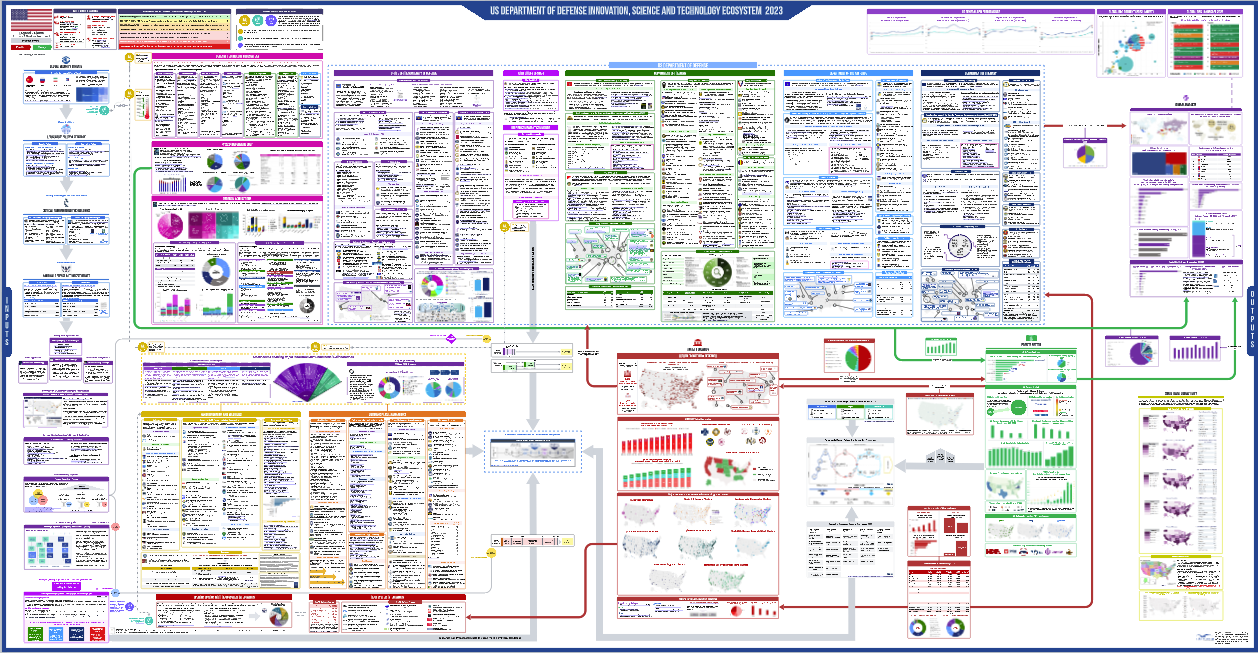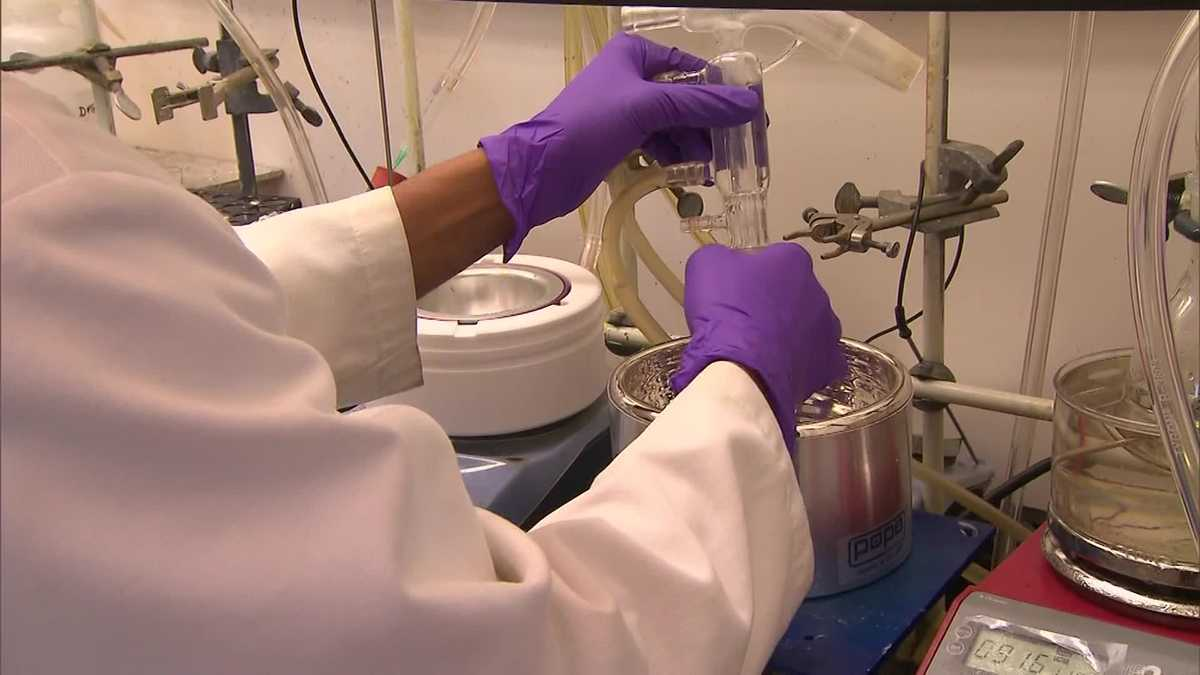The U.S. innovation ecosystem stands as a beacon of excellence and progress, revolutionizing fields like biomedical research through collaborative efforts between government, academia, and industry. This dynamic synergy has roots tracing back to World War II, a pivotal moment that catalyzed mass production of life-saving medications like penicillin. Fueled by substantial NIH funding and public-private partnerships, the elements of this ecosystem fostered unprecedented advancements in drug development history. The return of investment in research and development has yielded groundbreaking technologies and treatments that continue to shape global health policies. Today, the U.S. remains at the forefront, showcasing a robust model that other countries strive to emulate.
Examining the United States’ research and development landscape reveals a rich tapestry that blends collaboration between public institutions and private enterprises. Often referred to as the biomedical innovation framework, this intricate network has produced remarkable outcomes, especially in the realm of healthcare advancements. Rooted in historical initiatives during times of conflict, such as the medical breakthroughs from World War II, this system thrives on the principles of collaboration between universities, federal funding bodies, and the pharmaceutical industry. The resulting drug discovery processes and ongoing scientific training initiatives reflect the profound impact of this alliance on contemporary medicine. As other nations look to replicate this model, the strengths of the U.S. innovation ecosystem offer valuable insights into successful health improvements and technological advancements.
The Foundation of the U.S. Innovation Ecosystem
The origins of the U.S. innovation ecosystem can be traced back to World War II. Before this period, the country lacked a robust infrastructure for research and development, particularly in biomedical fields. However, the urgent needs of the war necessitated the collaboration between government agencies and academic institutions. This initiated a series of public-private partnerships that would lay the groundwork for a thriving innovation landscape. Scientists and researchers worked hand in hand with government entities, leading to breakthroughs such as the mass production of penicillin, which significantly reduced military hospital admissions for infectious diseases.
The relevance of this collaboration persists to this day. The partnerships formed during the war established a framework that continues to support the U.S. innovation ecosystem. Post-war, the National Institutes of Health (NIH) emerged as a vital player, facilitating funding and knowledge transfer between public entities and private sectors. Today, this interconnectedness fuels advancements in various fields, especially biomedicine, ensuring that the U.S. maintains its global leadership in innovation.
Public-Private Partnerships: A Catalyst for Biomedical Research
Public-private partnerships (PPPs) have proven essential in advancing biomedical research. By pooling resources and expertise from both sectors, these collaborations accelerate the drug development process, leading to faster and more efficient discovery of life-saving treatments. The shared risk between the government and private companies allows for greater investment in high-risk projects that might otherwise not receive funding. For instance, the financial backing and regulatory support from NIH foster environments where groundbreaking research can thrive, resulting in advancements that not only benefit the healthcare sector but also stimulate economic growth.
The historical context of these partnerships during World War II cannot be overstated. The urgency of wartime needs led to significant investments in scientific research, which have laid the foundation for enduring collaborations that continue to address modern healthcare challenges. As the landscape of biomedical research evolves, these partnerships remain critical in ensuring that innovative therapies are developed swiftly, reflecting a model that is emulated globally.
NIH Funding and Its Impact on Drug Development
NIH funding has been instrumental in shaping the landscape of drug development in the U.S. Historically, this funding has spurred innovation by supporting exploratory research projects that may have been too risky for private investment. The vast financial resources provided by the NIH have allowed researchers to pursue unconventional ideas that can lead to groundbreaking discoveries. This model has resulted in the development of numerous therapies and has been crucial in the response to public health crises.
Moreover, the impact of NIH funding is evidenced by the significant advancements it has facilitated in understanding diseases and discovering new treatments. For example, research funded by the NIH has led to the development of numerous vaccines and therapies that combat infectious diseases, marking a pivotal evolution in public health outcomes. In essence, the ongoing support and investment by the NIH not only enhance the U.S. innovation ecosystem but also ensure that the nation remains at the forefront of global biomedical research.
Historical Advances in Drug Development During WWII
World War II marked a significant turning point in the history of drug development, with milestones achieved that have had lasting effects. The immense focus on healthcare innovations led to the rapid advancements in antibiotic development, particularly penicillin, which revolutionized treatment protocols for infectious diseases. The establishment of the Committee on Medical Research (CMR) showcased how coordinated efforts can lead to remarkable breakthroughs, bringing together expertise from academia, industry, and governmental agencies.
These wartime advancements catalyzed a post-war golden age in drug development, as methodologies refined during the conflict laid the groundwork for future research. The techniques honed during wartime not only addressed immediate military health needs but also created a framework for civilian applications, driving forward the pharmaceutical industry and establishing processes that would define biomedical research for decades to come. This legacy underscores the importance of historical context in understanding current innovations.
The Role of Federal Funding in Driving Innovation
Federal funding has been a cornerstone of the U.S. innovation ecosystem, particularly in the biomedical field. From WWII onwards, government investments have supported the establishment and expansion of research institutions and initiatives. This financial backing has been crucial in ensuring that universities and research facilities can pursue ambitious projects without the immediate pressure of profitability. Such funding shapes the research agenda, allowing scientists to explore avenues that may lead to significant breakthroughs.
However, the recent discussions surrounding caps on federal reimbursements for indirect research costs raise concerns about the sustainability of this model. Limiting funding could stifle the growth of innovative research programs that have historically relied on government support. The strong relationship between public funding and private sector growth is evident, and any disruption to this balance may hinder future advancements in biomedicine.
Analyses of Technological Change and Innovation
Research analyzing technological change highlights the essential relationship between innovation and the involvement of federal governments in supporting R&D. Insights from economists reveal that such partnerships, particularly those formed in Zeiten of crisis, establish pathways to rapid advancement in technology, including biomedicine. The lessons learned from wartime innovation underscore the importance of responding to urgent public needs with swift investment in research and development activities.
The continuous evolution of technology demands similar responses today. As new health threats emerge, the need for robust and agile R&D frameworks becomes evident. The historical data from WWII serves as a case study for how effective public-private partnerships can mobilize resources and expertise efficiently, providing a template for managing contemporary challenges in drug development and healthcare.
War as a Catalyst for Medical Breakthroughs
The urgency of wartime conditions often acts as a catalyst for medical breakthroughs. For instance, WWII not only necessitated advancements in military technology but also spurred significant innovations in medicine, primarily through the need to address infectious diseases that affected soldiers. The developments of treatments like penicillin were direct responses to the critical challenges posed by wartime injuries and illnesses, highlighting how crises can accelerate scientific discovery.
The intersection of military needs and medical research promoted collaborative frameworks that endured beyond the war. This synergy proved formative, establishing pathways for ongoing military and civilian collaborations that would lead to subsequent innovations in healthcare. This dynamic interaction illustrates the power of urgency in fostering advancements that continue to serve society long after the conflict has ended.
Training the Next Generation of Scientists
The training of the next generation of scientists is crucial for the continual advancement of the biomedical field. While WWII created immense job opportunities for experienced researchers, it also catalyzed the involvement of countless young scientists and students. These individuals gained invaluable experience while contributing to critical wartime research efforts, learning methodologies and techniques that would shape their careers and the scientific community for decades.
Post-war, this influx of trained professionals contributed significantly to the innovation ecosystem. The presence of OSRD alumni in prominent scientific positions today can be traced back to their formative experiences during the war. Thus, fostering educational and research opportunities for emerging scientists remains vital in maintaining and growing the U.S. innovation ecosystem, ensuring a legacy of informed, capable researchers ready to tackle future health challenges.
Challenges and Future of the U.S. Biomedical Ecosystem
As the U.S. biomedical ecosystem stands as a model worldwide, it currently faces several challenges that could affect its sustainability. Federal funding cuts and changes in policy could disrupt the established public-private partnership that has supported decades of innovations. Ensuring that these partnerships thrive is crucial in maintaining the momentum of drug development and scientific discovery in a rapidly evolving global landscape.
Looking ahead, stakeholders must advocate for policies that prioritize investment in biomedical research. By addressing the challenges posed by budget constraints and fostering a climate of collaboration across sectors, the U.S. can continue to lead in global innovation. The ecosystem’s resilience pivots on its ability to adapt and respond to new threats with the same vigor and urgency that characterized its historical development during and after WWII.
Frequently Asked Questions
What role did public-private partnerships play in the U.S. innovation ecosystem during World War II?
Public-private partnerships were crucial to the U.S. innovation ecosystem during World War II. They facilitated collaboration between government agencies and private industry, enabling rapid advancements in biomedical research. This collaboration led to significant breakthroughs, such as the mass production of penicillin, which not only aided military efforts but also laid the groundwork for modern biomedical innovation.
How has NIH funding impacted the U.S. innovation ecosystem?
NIH funding has been a cornerstone of the U.S. innovation ecosystem, driving extensive biomedical research and development. By providing financial support to academic institutions and research organizations, NIH funding fosters new discoveries and promotes collaboration among public and private entities, significantly enhancing the nation’s overall health outcomes.
What historical advancements in drug development can be traced back to World War II?
The drug development history in the U.S. innovation ecosystem was profoundly influenced by advancements during World War II. The urgent need for effective medical solutions spurred innovations in antibiotic production, notably penicillin, which paved the way for the antibiotic revolution in the following decades, transforming treatment protocols and public health.
How did World War II spur advances in biomedical research within the U.S. innovation ecosystem?
World War II spurred advances in biomedical research as it prompted the government to invest heavily in health-related research initiatives. This era established a framework for public-private partnerships and emphasized the importance of R&D in the war effort, leading to groundbreaking discoveries in medicine and ultimately shaping the robust U.S. innovation ecosystem we see today.
What are the three pillars of the U.S. biomedical innovation system?
The three pillars of the U.S. biomedical innovation system are universities, the life sciences industry, and the National Institutes of Health (NIH). These entities work together synergistically to drive research, development, and application of new medical technologies and treatments, making the U.S. innovation ecosystem a global leader in biomedicine.
In what ways has federal funding influenced drug development post-World War II?
Federal funding, particularly through the NIH and various public-private partnerships, has significantly influenced drug development post-World War II by providing the necessary resources for research and innovation. This funding fosters collaboration across academia and industry, allowing for advancements in drug discovery, regulatory processes, and ultimately enhancing public health outcomes.
How do public-private partnerships enhance innovation in biomedical research?
Public-private partnerships enhance innovation in biomedical research by combining resources, expertise, and funding from both sectors. This collaboration accelerates the research process, leads to faster clinical trials, and encourages the development of new treatments, thereby strengthening the overall U.S. innovation ecosystem.
What impact did the antibiotic revolution have on the U.S. healthcare system?
The antibiotic revolution, which emerged from innovations during World War II, had a transformative impact on the U.S. healthcare system. It drastically reduced the morbidity and mortality associated with infectious diseases, improved surgical outcomes, and established a foundation for future drug development, solidifying the U.S. innovation ecosystem as a leader in biomedical research.
How has the U.S. innovation ecosystem maintained its leadership in biomedical research?
The U.S. innovation ecosystem has maintained its leadership in biomedical research through sustained investment from the government, robust public-private partnerships, and a strong network of academic institutions and industry leaders. These factors combine to foster an environment conducive to innovation, which continually advances health technologies and treatments.
What challenges currently face the U.S. innovation ecosystem in biomedical research?
The U.S. innovation ecosystem in biomedical research faces challenges such as fluctuations in federal funding, potential cuts to NIH budgets, and the increasing complexity of biomedical research itself. Addressing these challenges while maintaining collaboration among stakeholders is essential for the continued success of the U.S. innovation system.
| Key Points | |||||||||
|---|---|---|---|---|---|---|---|---|---|
| The U.S. innovation ecosystem in health has historical roots in World War II. | The federal government, universities, and private industry have collaborated in research. | Early research funding led to breakthroughs like penicillin production. | The Office of Scientific Research and Development (OSRD) was established during the war to coordinate R&D efforts. | Research partnerships established during the war laid the groundwork for future advancements. | U.S. universities played a crucial role in training the next generation of scientists. | Reimbursement for indirect costs encouraged private sector participation in public research. | Today’s system is a collaboration of academia, industry, and government supported by the NIH. | The partnership has led to significant advances in biomedicine, benefiting both military and civilian health. | Ongoing discussions about funding emphasize protecting and improving the existing U.S. innovation ecosystem. |
Summary
The U.S. innovation ecosystem is a world-leading model driven by historical partnerships between government, academia, and industry, particularly in the field of health. Originating during World War II, this collaboration has fostered incredible breakthroughs, such as the development of penicillin, which fundamentally transformed American healthcare and technology. The enduring success of this ecosystem is evident in the continuous advancements that arise from robust public-private research partnerships, ensuring that the U.S. remains at the forefront of innovation and medical excellence.



